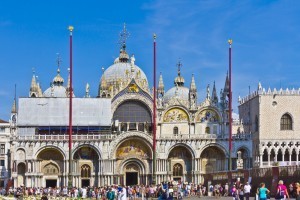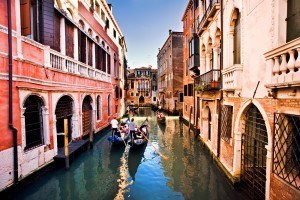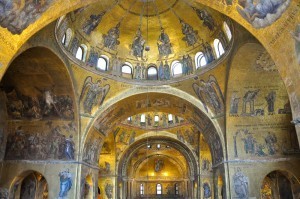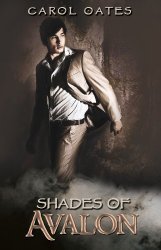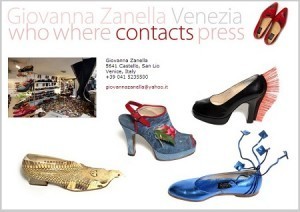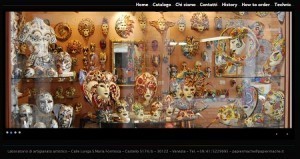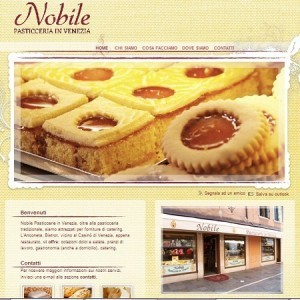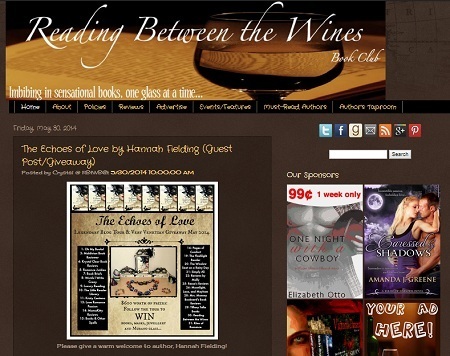Hannah Fielding's Blog, page 101
June 9, 2014
How languages evolve
I was born in Alexandria, Egypt, where the language predominantly spokenis Arabic. So I learnt to speak Arabic.
My school was run by French nuns, my parents were fluent in French, and my governess was half-French. So I learnt to speak French.
My parents were well-educated and well-read, and they wanted to raise worldly daughters who could converse easily with people all over the world in the most commonly used language. So I learnt to speak English.
By the time I was a teenager, I was fluent in Arabic, French and English, and had a smattering of other languages, such as Italian; Zula, my governess, was half-Italian. French was – and is – my favourite language; I find it very beautiful on paper and spoken aloud. I read French literature at university, and initially I wrote my first novel, Burning Embers, in French.
Today, I split my time between England and France, with the odd visit to other countries, and I speak both French and English. I think and write in both languages too: they come as naturally to me as breathing.
Yet these are just two languages… Did you know that there are an estimated 7,000 different languages in the world? Of these, some 200 are spoken by more than a million people. That’s so many different ways of saying something. Imagine one of my books translated into 200 languages. Imagine all the decisions on phrasing and vocabulary the translator would need to make, and how each tiny decision would influence the final artistic product. It’s mind-boggling!
The origin and development of languages fascinates me, so I was intrigued by a new TED talk on the subject (for more on TED talks of interest to readers and writers, see my blog post later this week). If this video catches your interest, head over to the TED website for more materials: http://ed.ted.com/lessons/how-languages-evolve-alex-gendler.
Recipe: Baci di Dama
 What better recipe for a romance novelist to try than one for a delicious Italian sweet treat called ‘Lady’s Kisses’? American readers may spot a striking resemblance between these and the US-originating whoopie pies. For both one element is key: the filling! And any biscuits sandwiched with chocolate are bound to hit the spot…
What better recipe for a romance novelist to try than one for a delicious Italian sweet treat called ‘Lady’s Kisses’? American readers may spot a striking resemblance between these and the US-originating whoopie pies. For both one element is key: the filling! And any biscuits sandwiched with chocolate are bound to hit the spot…
Ingredients:
200 g toasted hazelnut, finely ground
200 g caster sugar
200 g unsalted butter, left out to soften
250 g flour
250g fine dark chocolate
Cream the sugar and butter.
Sift on the ground hazelnut and flour and combine to a dough.
Wrap the dough in clingfilm and rest it in the fridge for at least an hour.
Shape into small balls and place on a lined baking tray.
Bake for 30 minutes in a moderate oven.
Allow to cool.
Melt the chocolate.
Spread a little chocolate on two baci at a time and ‘kiss’ them together.
If hazelnut biscuits aren’t your favourite, how about meringue instead? The Venetian treat baci al gondola(kisses in the gondola) is made the same way, but with chocolate-striped meringue swirls to ‘kiss’ the chocolate filling.
June 8, 2014
The best views of Venice
There is a glorious City in the Sea.
The Sea is in the broad, the narrow streets,
Ebbing and flowing; and the salt sea-weed
Clings to the marble of her palaces.
No track of men, no footsteps to and fro,
Lead to her gates. The path lies o’er the Sea,
Invisible; and from the land we went,
As to a floating City — steering in,
And gliding up her streets as in a dream,
So smoothly, silently — by many a dome,
Mosque-like, and many a stately portico,
The statues ranged along an azure sky;
By many a pile in more than Eastern pride,
Of old the residence of merchant-kings;
The fronts of some, though Time had shattered them,
Still glowing with the richest hues of art,
As though the wealth within them had run o’er.
So wrote nineteenth-century poet Samuel Rogers in ‘Venice’, and his words have as much resonance today as they did then for those who look – really look – at Venice.
Friedrich Nietzsche wrote, ‘There are no facts, only interpretations.’ A visitor to Venice is not there to be told what the city is, but to experience it and form his or her own interpretation. And because Venice is a multi-faceted city, only by viewing it from different angles can one really get a true sense of its form and nature.
Amid the throngs
Head to St Mark’s Square. Look up at the awe-inspiring architecture of St Mark’s Basilica, the Doge’s Palace and the clock tower, and you see why this space is the very heart of Venice. Look around at the melting pot of people surrounding you, and you understand how Napoleon came to call the piazza the ‘drawing room of Europe’.
From up high
The Campanile is the tallest building in the city, and at the top you can enjoy a breathtaking view of the lagoon and the buildings of the city. But the tower is immensely popular with tourists, and in fact the view from the bell tower of the Church of San Giorgio Maggiore, designed by Palladio on San Giorgio Maggiore island, is equally stunning. Alternatively, treat yourself to a cocktail in the Skyline Bar at the Molino Stucky Hilton hotel.
From the water
Take a vaporetto ride along the Grand Canal for a close-up view of beautiful palaces, or opt for a more sedate, romantic drift along the waterways in a gondola.
From within
The city is so much more than what one can see outside: it is not a collection of ornate and lavish surfaces, but buildings containing hearts and souls. Any visitor to Venice, then, must cross the threshold from without to within. Explore the interior of St Mark’s Basilica, marvelling at the stunning gold mosaics, and be moved by the works of Venetian masters Bellini, Tintoretto and Titian at the Accademia Gallery.
June 6, 2014
Book review: Shades of Avalon by Carol Oates
From the blurb:
Ben Pryor grew up as an average kid in Camden, Maine, unaware of the supernatural storm brewing in his Celtic blood. However, at nineteen, as the last born in the royal line of beings that once ruled Atlantis, Ben has eagerly embraced his newfound abilities and birthright.
When Caleb, his sister’s mate, goes missing under suspicious circumstances, the prime suspect is the last remaining member of the overthrown, corrupt Guardian Council.
With the discovery that an old acquaintance has been keeping secrets, and the future Ben was so sure of shifting before his eyes, the situation becomes more complicated and the ransom for Caleb too high.
In the sequel to Shades of Atlantis, Ben will delve deeper than he ever imagined into the old, magical ways of the Guardians, the secrets of Excalibur, and the truth behind the legend of King Arthur.
What exactly did the Council hide beneath the citadel of Camelot? And can it help get Caleb back without putting the world in danger?
Having read and very much enjoyed Shades of Atlantis (see my review at http://www.hannahfielding.net/?p=1063), I was keen to read the next book in the series, which picks up the story of the Guardians. It took me a week to read this book, and what a blissful week that was as I escaped into Carol’s fantasy world.
There are so many things I loved about the book:
The shift in protagonist from Book 1 to Book 2: In Shades of Atlantis, we saw the story from the point of view of Triona, as she fell in love with Caleb. Now, we move into Ben’s perspective, which adds a whole new dimension to the story world. I found this to be refreshingly different to the average approach to series writing, and I really enjoyed the experience of following a male protagonist in what is fundamentally a love story.
The inspiration the author finds in legends: I can’t tell you how delighted I was to discover the narrative bringing in such fascinating characters as King Arthur, Guinevere and Merlin, but with such inventive and original twists. Coupled with the English and Irish backdrops, I was quite swept away into the fantasy – except that Carol’s writing is so vivid and persuasive, it felt ever so real!
The characters: There is quite a cast, and yet I never got lost – and I felt empathy for each and every one (except Zeal, of course, the villain of the piece). I especially loved how important John and his family became in this story, and the conflict this created for both Triona and Ben.
The story: Twists and turns aplenty, and lots of drama to keep you turning the pages. I found myself picturing scenes in my mind like a film playing out on the big screen – this is an epic, gripping story that begs to be visualised.
The depth: There’s plenty of light-hearted, ‘young adult style’ banter in the book, but this is blended with a carefully thought out story full of meaning and poignancy. I especially like the meaning of shade in the book; as Amanda tells Ben: “Shade needs light and darkness to exist at all.”There is good and there is bad, there is light and there is darkness, and the exploration of this and all that lies between is what makes this series an intelligent, compelling read that stays with you long after you’ve closed the book.
Shades of Avalonis available now from Amazon; click on the book cover below to visit the store.
June 4, 2014
Transcending the pages: fiction as visual art
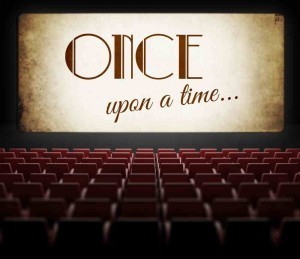 Once upon a time, books were books, only books. Then along came the motion picture, and books – for so long the foundation of culture – were the obvious source of inspiration for films. Frankenstein, A Christmas Carol, A Tale of Two Cities, Rip van Winkle, The Assommoir, Uncle Tom’s Cabin, Oliver Twist, From The Earth To The Moon, Alice in Wonderland – by 1910 authors’ works were forming the basis for many stories played out on the big screen.Since then, some of the most popular, most well-remembered and most critically acclaimed movies have been book adaptations:
Once upon a time, books were books, only books. Then along came the motion picture, and books – for so long the foundation of culture – were the obvious source of inspiration for films. Frankenstein, A Christmas Carol, A Tale of Two Cities, Rip van Winkle, The Assommoir, Uncle Tom’s Cabin, Oliver Twist, From The Earth To The Moon, Alice in Wonderland – by 1910 authors’ works were forming the basis for many stories played out on the big screen.Since then, some of the most popular, most well-remembered and most critically acclaimed movies have been book adaptations:
Gone With the Wind
Breakfast at Tiffany’s
Forrest Gump
The Color Purple
Out of Africa
The Great Gatsby
Harry Potter
Water for Elephants
The Time Traveller’s Wife
… I could go on, and on; there are so many!
More than one hundred years on from the first book adaptations and culture is revolutionarily different. Books and movies are so closely related that the unwitting audience can be forgiven for wondering which came first in the creative process. This year alone a host of new movie releases are adaptations of books, from The Fault in Our Stars and Mockingjay to Gone Girl and Where Rainbows End. How delighted the authors of these books-made-into-films must be, for this has become the very pinnacle of a book’s success: a movie of a book, after all, guarantees a big push in book sales.
I wonder, in today’s world of writing and publishing, how many authors write with the big screen in mind? I don’t necessarily mean that an author deliberately writes with the intention of their book being made into a film (although prolific romance novelist Nicholas Sparks, whose books are frequently bought by Hollywood, has admitted in interviews that he thinks ‘film’ as he writes fiction). But in a world that is full of movies – on televisions, on computers, on phones; even on billboards these days – are we programmed to think of our stories on a screen?
I think we are. When I write, I see the story playing out in my mind – I feel I am describing what my inner eye sees. I deliberately do so, because to imagine the narrative as a film forces me to consider:
The setting – what does it look like? What are the colours? Are the leaves on the trees dancing in the breeze? Is the reflection of the sun on the water dazzling the main character?
The atmosphere – relaxed and serene, passionate and exciting, loaded and tense?
The connection between characters – how do they relate to each other? Are they looking at each other? How far apart are their bodies?
The rhythm – just like a film, are there times of quiet, and times of drama? Is the story building to a compelling climax?
Of course, the style and genre of the ‘mind movie’ matters. Reviewers of my books have talked of the ‘epic’ feel to them, and one newspaper called Burning Embers ‘romance like Hollywood used to make’. What’s coming through is my love for high romance, as played out in classic cinema.
I can dream of movies made of my books, but in a sense, that’s already a reality for me. My characters live and breathe beyond the pages of the book – I’ve watched their story unfold; I’ve written what I’ve seen.
June 3, 2014
Shopping the Venetian way
Last time I visited Venice, it was a research trip for my novel The Echoes of Love. I wanted to firm up descriptions of the setting, and so I walked in my characters’ footsteps, seeing the city through their eyes. But of course, I could not resist just a little look in some shops while I was there – in my defense, my heroine Venetia meets a Chinese wise man in a shop off the beaten track, so while shopping I was researching too: honestly!
If you haven’t been to Venice and experienced for yourself what it has to offer in terms of retail therapy, let me tell you that it’s a delightful city for both window shopping and indulgence. What interests me most is the boutique-style businesses that offer a slice of authentic Venetian style. Here are some of my favourite shops, must-visit places for any fashionista visiting the city.
Scents: Spezieriaall’Ercoled’Oro
A treasure trove of herbs, spices and perfumes. I especially love the Murano-glass packaged scents inspired by age-old recipes.
(Strada Nova, Cannaregio 2233)
Shoes: Giovanna Zanella
A shoe artisan making unique and quirky designs.Certainly the shop to buy from if you want friends to spot your footwear and gasp, ‘Oh, I love your shoes!’
(Castello San Lio, CalleCarminati 5641)
Handbags: Roberta di Camerino
Beautiful designer handbags in a rainbow-colour palette. I love the sumptuous velvet collection.
(L’atelier di Palazzo LoredanGrifalconi, Cannaregio 6359)
Masks: Papier Mache
Once you’ve quenched your thirst for modern fashion, treat yourself to a look at timeless Venetian masks. Hand-created by artisans, the masks in these shops are everything you’d expect of Venetian design: opulent, lavish, stunning.
(CalleLungaS.Maria Formosa – Castello 5174/b – 30122)
Something sweet: Pasticcerie Nobile
Finally, for fuel during your shopping marathon, here’s a traditional patisserie with a wide range of Venetian desserts baked daily. Grab anespresso and a sweet treat, recharge, and off you go again…
(Cannaregio 1818)
June 1, 2014
Navigating the ‘spaghetti streets’ of Venice
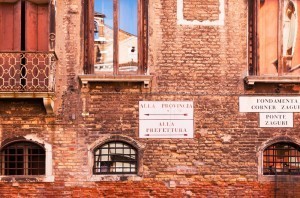 One of the many charms of the city of Venice, setting for my romantic novel The Echoes of Love, is its unique map: this is a city of waterways cutting among myriad winding streets that form something of a daunting labyrinth for the tourist. Not in Venice will you find the easy-to-navigate, logical approach to city planning employed by the Romans; streets in this city of islands evolved over time to fit need and geography, and most were only ever designed for pedestrians and horses, hence they are some of the narrowest thoroughfares in Europe.
One of the many charms of the city of Venice, setting for my romantic novel The Echoes of Love, is its unique map: this is a city of waterways cutting among myriad winding streets that form something of a daunting labyrinth for the tourist. Not in Venice will you find the easy-to-navigate, logical approach to city planning employed by the Romans; streets in this city of islands evolved over time to fit need and geography, and most were only ever designed for pedestrians and horses, hence they are some of the narrowest thoroughfares in Europe.
Getting around is either a lot of fun or somewhat stressful, depending on your perspective. Some streets take you on a logical path from A to B; some lead you on a bewildering circuitous route from A to B; some take you from A straight to a dead end. And as for the canals – well, the street may lead you to one of the many bridges over which you can continue your journey or simply to the canalside (best to concentrate as you walk to avoid inadvertently plunging in!). No wonder the Venetian street map has been compared to a tangled bowl of spaghetti.
Walking several miles in an afternoon and finding oneself lost several times in that period is all part of the experience of visitors to Venice. Of course, you can use the street signs to help. But what do they mean? Here’s a quick tour:
Bridge: ponte
Canal: canale or rio
Street: calle, ruga, ramo or salizada (rioterrà for a street that was once a canal; riva for one facing the lagoon or Canal Grande; merceria for one flanked by shops; sacca for a dead-end street)
Pavement beside a canal: fondamenta or riva
Public passageway under a building: sottoportico and sottoportego
Square: campo, campiello, corte or piazza (piscina for a square that was once a canal)
Venetians traditionally named streets after businesses or establishments nearby. So you have the street of:
abbazia (abbey)
avvocati (lawyers)
botteri (cask maker)
cafettier(coffee shop)
forno (oven)
frezzeria (arrow maker)
magazen (warehouse)
piovan (vicar)
pistor (baker)
remer) (oar maker
spadaria (spade maker)
botteghe (shops)
teatro (theatre)
traghetto (gondola crossing)
Beware, though – within the city you’ll find several streets with the same name: you need to know the sestieri (district) of the street you’re looking for.
Personally, I quite enjoy getting lost in Venice. I’ve found some of the most wonderful little boutiques, coffee shops and architectural delights through aimless wandering (see my blog post later this week on Venetian shops). And getting lost is the perfect excuse to practise your Italian as you ask for directions and then try to fathom the response. Here are some phrases you may find helpful:
Can you tell me how to get to: lei puòdirmi come arrivare a
Excuse me: scusi
I’m lost: mi sonoperso/a
Please: per favore
Straight on: sempredritto
Thank you: grazie
To the left: a sinistra
To the right: a destra
May 30, 2014
Win with Reading Between the Wines on my ‘Legendary’ Blog Tour & Very Venetian Giveaway
Please visit http://www.readingbetweenthewinesbookclub.com/2014/05/the-echoes-of-love-by-hannah-fielding.html and comment for your chance to win, and to read about The Three Crones.
Maya Angelou in quotations
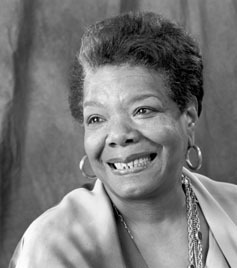 I was sad to read this week of the passing of the great American writer and activist Maya Angelou. Readers of my novels and followers of my Twitter feed will know that I am something of a collector of quotations, and over the years several of Maya’s quotes have been added to my notebook of wisdom. She was a lady full of passion, honesty and courage, and she was also a wonderful writer – a person to inspire indeed.
I was sad to read this week of the passing of the great American writer and activist Maya Angelou. Readers of my novels and followers of my Twitter feed will know that I am something of a collector of quotations, and over the years several of Maya’s quotes have been added to my notebook of wisdom. She was a lady full of passion, honesty and courage, and she was also a wonderful writer – a person to inspire indeed.
Today, I’m sharing some of my favourite Maya Angelou quotations:
Courage is the most important of all the virtues because without courage, you can’t practice any other virtue consistently.
If you don’t like something, change it. If you can’t change it, change your attitude. Don’t complain.
It’s one of the greatest gifts you can give yourself, to forgive. Forgive everybody.
I’ve learned that people will forget what you said, people will forget what you did, but people will never forget how you made them feel.
I’ve learned that you can tell a lot about a person by the way (s)he handles these three things: a rainy day, lost luggage, and tangled Christmas tree lights.
My mission in life is not merely to survive, but to thrive; and to do so with some passion, some compassion, some humor, and some style.
Nothing will work unless you do.
There is no greater agony than bearing an untold story inside you.
Try to be a rainbow in someone’s cloud.
We delight in the beauty of the butterfly, but rarely admit the changes it has gone through to achieve that beauty.
You may not control all the events that happen to you, but you can decide not to be reduced by them.
What a legacy this writer leaves to those writers, women, people who follow, and what a comfort her words must be now to her family.
Which quotation most inspires you? I would love to hear your thoughts.
May 29, 2014
Ode to the notebook
 If there’s one shop, other than a bookshop, in which I can lose all track of time (and spend a near fortune!) it’s a stationer’s. Notebooks in all shapes and colours and sizes and designs, lined up on shelves, just waiting to be filled, to paraphrase William Wordsworth, with the breathings of your heart. If I want a treat for myself or a writer friend, I visit Smythson of Bond Street and choose one of their beautiful leather-bound notebooks. The smell! The feel of the pages! Divine…
If there’s one shop, other than a bookshop, in which I can lose all track of time (and spend a near fortune!) it’s a stationer’s. Notebooks in all shapes and colours and sizes and designs, lined up on shelves, just waiting to be filled, to paraphrase William Wordsworth, with the breathings of your heart. If I want a treat for myself or a writer friend, I visit Smythson of Bond Street and choose one of their beautiful leather-bound notebooks. The smell! The feel of the pages! Divine…
I have had a notebook to hand for so many years now that it’s second nature to me: I’m bereft without one. As a young woman, I wrote my first book longhand in notebooks; today, I reserve them for jotting down ideas as they come to mind. I think many writers have a strong relationship with notebooks: despite our use of modern technology to write novels efficiently, to write will always mean to write.
Author Lawrence Norfolk recently wrote an interesting piece for BBC News entitled ‘Writers’ notebooks: A junkyard of the mind’. He states:
A notebook accumulates its value slowly, line by line and page by page. (…) A full notebook potentially contains the rest of your writing life.
That is how I see my notebooks: invaluable. They are the mapping of inspiration and creativity; they are the soul of the writer on paper.
For me, the joy of writing in a notebook is that it feels liberating. I can write anything, in any way! This is writing that is just for me – there are no rules; there is no one judging.
Or is there?
If you are lucky enough to become a renowned author, your notebooks become objects of great worth. The British Library, for example, exhibits all sorts of author notes, from great writers like Austen, Dickens and Hardy. Perusing their notes affords a glimpse into ideas in their rawest form.
I wonder, though, how these writers would feel about the publication of their notes? Would they edit them, if they could? Rewrite them more neatly? Would they see such publication as an invasion of their privacy, or simply be delighted by the interest in their creative process?
However they may feel, I don’t doubt that they would never wish their notebooks destroyed. They may be a world away from my published books, but in fact my notebooks – those vehicles through which I created my books – will always remain just as precious.


